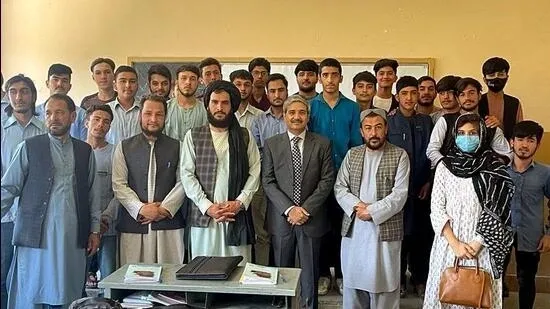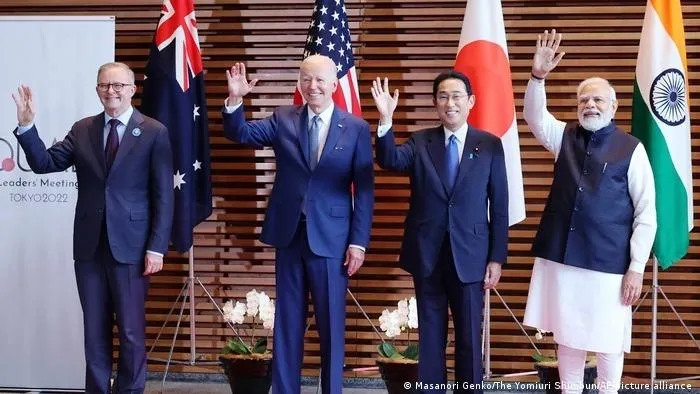Both countries, Denmark and India, have ambitious goals regarding the climate and the sustainable future that we want. Today India is a large CO2 emitter; actually, the world’s third-largest, but per capita much lower. However, with the prospect of doubling its carbon emission by 2030 from 2012 levels, it is all the more important to focus on the climate agenda. Denmark has legally committed to reduce our CO2 emissions by 70 percent by 2030 from 1990 levels and to take the lead on the UN’s sustainable development goal no. 7 on affordable and clean energy.
These ambitious goals have naturally led to a growing collaboration between India and Denmark – bilateral cooperation we today call the Green Strategic Partnership (GSP) – the first of its kind in the world. The partnership builds on a whole-of-government approach involving a range of sectors and authorities on both sides. The partnership is a mutually beneficial arrangement to advance political cooperation, expand economic relations, and green growth. As a strengthening of our collaboration, the partnership addresses the global challenges and opportunities and focuses ambitiously on implementing the Paris Agreement and the UN Sustainable Development Goals.
The Green Strategic Partnership is also unique as it connects Denmark’s skills with India’s development agenda – the so-called missions. These missions like Swatch Bharat, Jal Jeevan Mission, and most recently the Green Hydrogen are decisive for the realization of PM Modi’s #NewIndia.
The Path to a Green Strategic Partnership

The Indo-Danish relations have existed for more than 400 years, starting with the trade relations established in Tranquebar in 1620. Since then, India and Denmark have continuously inspired and influenced each other. In 1949, diplomatic relations were established, and soon we can celebrate 75 years of cooperation. In 2009 a Joint Commission for Cooperation was established with Joint Working Groups within strategic sectors: energy, environment, food and agriculture, science and innovation, shipping, labor mobility, smart cities, and digitalization.
2020 became a historic year with the launch of the Green Strategic Partnership. On September 28, 2020, H.E. Narendra Modi, Prime Minister of India, and H.E. Mette Frederiksen, Prime Minister of Denmark, launched a Joint Statement on the Establishment of a Green Strategic Partnership between the governments of the two countries based on mutual interests, common values and a commitment to uphold the rules-based international system.
In October 2021, Prime Minister Mette Frederiksen came to India on a State visit. Highlighting the partnership during the meeting with Prime Minister Narendra Modi, Denmark’s Prime minister stressed: “With the Green Strategic Partnership between India and Denmark, we have a unique framework for cooperation. As Prime Minister Modi has put it, Denmark has the skills, India has the scale”. The visit was a milestone for the unique partnership, and the engagement was returned in the following March 2022, when Prime Minister Modi came to Denmark on a historic visit. This was the first time in 20 years an Indian Prime Minister visited Denmark. These visits show a mutual interest in the partnership and a willingness to enhance it even further.
Inspiring Results in the Key Sectors
We must unite to combat climate change and join hands and minds to secure a more sustainable future. By allowing the Green Strategic Partnership to flourish and welcoming new technologies, innovations, and solutions we are acknowledging, the challenges our climate is facing and making them more tangible. With that in mind, we have a special focus on energy and water.
Energy:
A key aspect of the Green Strategic Partnership is collaborations on science and innovation. International collaboration on these fronts is vital to solving today’s many challenges. One area of cooperation is the energy sector, which is more relevant than ever. As a part of the effort to solve the climate crisis, Denmark is working with India, through Innovation Fund Denmark and the Indian Department of Science and Technology, to provide alternative fuel sources. We have launched a joint research call on green fuels, including green hydrogen. These new fuels are the future of hard-to-abate sectors, such as steel production and shipping. By producing hydrogen, ammonia, or other similar fuels with renewable energy, we can make it feasible for important industries to become carbon neutral as fast as possible.
Green fuels not only help solve the climate crisis but also provide a fantastic opportunity to increase the energy security of India and Denmark. Green fuels, produced through windmills and other renewable energy sources, are a clean and sustainable way to secure a reliable energy supply without being dependent on foreign powers. The government of Denmark launched its ambitious Power-to-X strategy in 2021, just as India put forth its Hydrogen Mission in the same year. We hope that this will provide an avenue for future collaboration and innovation.
Water:

Water is one of our focus areas. Some topics of water and circular economies are water efficiency and non-revenue water, which are both very crucial to avoid a worsening in the acute water shortage in India. Therefore, to deal with these issues, several projects have been launched in collaboration between the Danish Ministries and the Indian Ministry of Housing and Urban Affairs within sustainable water management in cities. In this partnership, an “Urban Living Lab” shall investigate how sustainable solutions can be implemented and up-scaled to all of India. Then, there is the AIM-ICDK Water Challenge, where we engage innovative youth in India and the rest of the world to provide solutions for water challenges plaguing humanity. Indian students will join the World Water Congress 2022 held in September in Copenhagen. We must act together to prevent the crisis from worsening into irreparable conditions.
India and Denmark’s innovative relationship guided by the Green Strategic Partnership puts both nations on the map as responsible stakeholders. Whether we work together on energy, life sciences, or climate, we provide solutions to solve the world’s most pressing issues. India and Denmark’s partnership is a shining example of how to be a climate frontrunner.
A Good, Great, and Green Impact:
The Green Strategic Partnership has a significant impact on both Indian and Danish society. Particularly innovation secures green growth for both countries and beyond. Our future depends on the 3 Gs: Good, Great, and Green. What is amazing about this framework is the flexibility of the phrase to be adapted to all the sectors promoting good ambitions, great innovations, and green solutions.
Back in October 2021, when Prime Minister Mette Frederiksen visited India, Prime Minister Modi held a speech underlining the skills, scale, and sustainability. Later, this phrase expanded to skills, scale, speed, scope, and sustainability. These five Ss frame the Green Strategic Partnership’s essence and mission. Denmark is bringing the skills and technologies to India. India has the scale for implementing these technologies, furthermore with an impressive speed, allowing the results to have an impact much faster. Ultimately, the scope of the sustainable impact is far greater. Without the Green Strategic Partnership, the impact would not have been near to the good, great, and green future we aim for.
Finally, it is important to keep in mind that to succeed with this incredible partnership, we must utilize the skills from Denmark and the scale of India. We have to ensure that both parties will benefit mutually in the coming years.
India is developing fast and in 2025-26, the population will cross 1.5 bn people, out of which 1 bn will be below 35 years. In 2040, 20% of the global workforce will come from India. The economy will grow faster than any other country, and India will soon become a 5 trillion USD economy. With that comes a huge demand for energy etc. India stands a unique chance of becoming the only global economy to develop thru decarbonization. Our Green Strategic Partnership will be a vital contribution.
A stronger, greener, and more sustainable India is beneficial to all of us and for the survival of our Plant.
Visions and political leadership are driving the needed development. The Green Strategic Partnership is the ultimate essence of the Indo-Danish cooperation and our duty of care.
About the author:

A member of the elite Danish Foreign Service for over 40 years, His Excellency Ambassador Freddy Svane is the current Ambassador of the Kingdom of Denmark to India, Bhutan, Sri Lanka, and the Maldives. Before assuming charge in New Delhi, Ambassador Svane worked in Brussels, Paris, and as Ambassador of the Kingdom of Denmark to Japan.
The Ambassador is deeply passionate about Green and Renewable Energy and its utility in the fight against climate change.
Disclaimer: The views expressed in the article are the author’s own and do not necessarily reflect those of ISSF or its staff.



